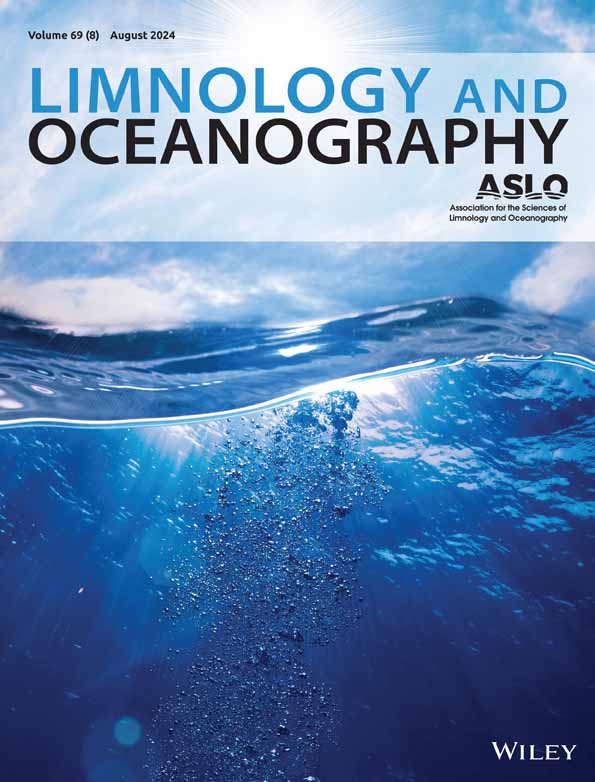Radiocarbon analysis reveals decomposition of old soil organic carbon into dissolved inorganic carbon in a subtropical mangrove ecosystem
IF 3.8
1区 地球科学
Q1 LIMNOLOGY
引用次数: 0
Abstract
The outwelling of remineralized dissolved inorganic carbon (DIC) from the subsurface soil layer through tidal pumping has recently been noted for its importance in the blue carbon budget of mangroves. However, the age of soil organic carbon (SOC) that has been decomposed into DIC remains uncertain. In this study, two distinct models (a two endmembers model and three endmembers model) were utilized to verify the age of the decomposed SOC, employing radiocarbon (Δ放射性碳分析揭示了亚热带红树林生态系统中旧土壤有机碳分解为溶解无机碳的过程
再矿化溶解无机碳(DIC)在红树林蓝碳收支中的重要性近年来得到了重视。然而,土壤有机碳(SOC)被分解为有机碳(DIC)的年龄仍不确定。在本研究中,采用放射性碳(Δ14C)作为示踪剂,采用两种不同的模型(两端元模型和三端元模型)来验证分解SOC的年龄。我们对日本亚热带红树林生态系统进行了24 h DIC和DIC同位素(δ13CDIC和Δ14CDIC)测量,并对Δ14C的有机碳垂直剖面进行了测量。分解为DIC的源SOC预测值Δ14C在两种不同的模型中表现出相似的趋势,平均值在- 86.6‰~ - 16.8‰之间。使用OxCal程序将Δ14C值转换为日历年龄,使用来自IntCal20的校准曲线。这种转换表明,红树林小溪中的DIC起源于一个多世纪前埋藏的有机碳。考虑到红树林局限于潮间带,红树林生态系统中有机碳的埋藏可能存在空间限制。因此,海洋碳库从有机碳到有机碳的转变可能是支持数千年长期碳封存的关键过程。
本文章由计算机程序翻译,如有差异,请以英文原文为准。
求助全文
约1分钟内获得全文
求助全文
来源期刊

Limnology and Oceanography
地学-海洋学
CiteScore
8.80
自引率
6.70%
发文量
254
审稿时长
3 months
期刊介绍:
Limnology and Oceanography (L&O; print ISSN 0024-3590, online ISSN 1939-5590) publishes original articles, including scholarly reviews, about all aspects of limnology and oceanography. The journal''s unifying theme is the understanding of aquatic systems. Submissions are judged on the originality of their data, interpretations, and ideas, and on the degree to which they can be generalized beyond the particular aquatic system examined. Laboratory and modeling studies must demonstrate relevance to field environments; typically this means that they are bolstered by substantial "real-world" data. Few purely theoretical or purely empirical papers are accepted for review.
 求助内容:
求助内容: 应助结果提醒方式:
应助结果提醒方式:


